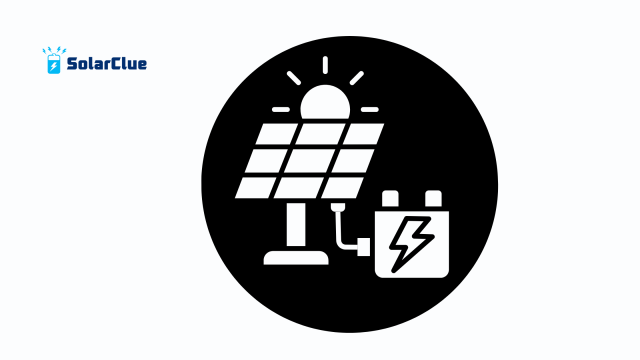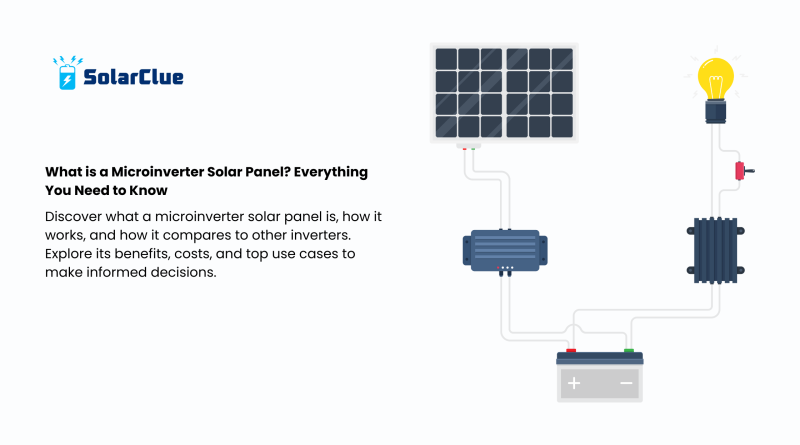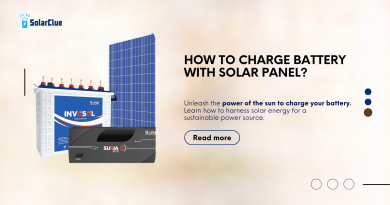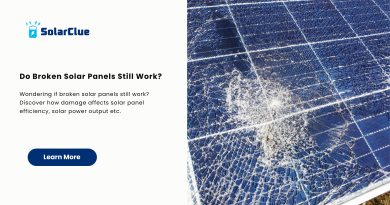What is a Micro Inverter Solar Panel? Everything You Need to Know
With the rising demand for smarter and more efficient solar energy solutions, the microinverter solar panel has gained significant attention. Unlike traditional systems, these panels come equipped with microinverters, making them highly efficient, safer, and easier to monitor. In this blog, we’ll walk you through how microinverters work, their benefits, and how they compare to other inverter types—all while covering essential details like solar panel cost, solar panel efficiency, and more.
Table of Contents
- 1 What is a Microinverter?
- 2 How Do Microinverters Work?
- 3 Microinverter vs String Inverter
- 4 Microinverter vs Central Inverter
- 5 Advantages of Microinverter Solar Panels
- 6 Are There Any Disadvantages?
- 7 Microinverter Cost Breakdown
- 8 Microinverter Technology: The Future of Solar
- 9 Best Use Cases for Microinverter Solar Panels
- 10 How Microinverters Improve Solar Panel Efficiency
- 11 What About Solar Panel Cost?
- 12 Choosing the Best Solar Panel
- 13 Inverter for Solar Panels: Is Micro the Better Choice?
- 14 Where to Buy Microinverter Solar Panels
- 15 Installation & Maintenance Tips
- 16 Final Thoughts
- 17 FAQs
What is a Microinverter?
A microinverter is a small inverter attached to the back of each solar panel. Instead of using a central inverter for the entire system, microinverters convert DC electricity to AC electricity directly at each panel. This means each panel operates independently, enhancing the overall system’s performance and energy output.
How Do Microinverters Work?

Wondering how do microinverters work? It’s simple. When sunlight hits a solar panel, it generates DC power. A microinverter, mounted directly behind the panel, immediately converts this DC into usable AC power. This reduces power loss, ensures safety, and allows you to track each panel’s performance individually.
Microinverter vs String Inverter
The microinverter vs string inverter debate is crucial. In a string inverter setup, panels are connected in a series, so if one panel underperforms, it affects the entire system. In contrast, microinverters ensure that each panel works at its own maximum potential, even if others are shaded or dirty.
Microinverter vs Central Inverter
Another comparison worth noting is microinverter vs central inverter. While central inverters manage the whole array’s energy from a single point, microinverters convert energy at the panel level. This localized control leads to greater solar panel efficiency and easier maintenance diagnostics.
Advantages of Microinverter Solar Panels
Here are the top benefits of choosing a microinverter solar panel system:
- Improved performance: Each panel operates independently, avoiding system-wide inefficiencies.
- Enhanced monitoring: Track the output of individual panels in real-time.
- Greater safety: Eliminates high-voltage DC wiring.
- Scalability: Easily expand your system later.
Are There Any Disadvantages?
Like any technology, microinverters have a few downsides:
- Microinverter cost is generally higher than string or central inverters.
- Maintenance can be trickier since each inverter is on the roof. However, many homeowners find the benefits outweigh these drawbacks.
Microinverter Cost Breakdown
In India, the microinverter cost ranges between ₹10,000 and ₹20,000 per unit. While this may seem high, the ability to maximize energy production and long-term returns often justify the initial investment—especially in areas with partial shading or complex rooftops.
Microinverter Technology: The Future of Solar
Thanks to rapid advancements in microinverter technology, manufacturers now offer integrated solar panel with microinverter systems. These all-in-one solutions simplify installation, reduce equipment mismatches, and improve overall reliability.
Best Use Cases for Microinverter Solar Panels
Microinverters are perfect for:
- Solar panel for home systems with varying roof angles
- Installations affected by shading from trees or buildings
- Homeowners who want detailed performance monitoring
- Systems that may expand over time
How Microinverters Improve Solar Panel Efficiency
Adding microinverters can boost your solar panel efficiency by up to 15%. With each panel working independently, performance issues in one panel won’t drag down the rest.
What About Solar Panel Cost?
The solar panel cost depends on various factors like brand, efficiency rating, and installation size. While integrating microinverters does increase upfront costs, the long-term gains in performance and reliability make it a wise investment for many.
Choosing the Best Solar Panel
Looking for the best solar panel? Focus on these features:
- High efficiency rating
- Compatibility with microinverters
- Long warranties (at least 25 years)
- Durability in local climate conditions Pairing premium panels with microinverters ensures maximum ROI and peace of mind.
Inverter for Solar Panels: Is Micro the Better Choice?
If you’re selecting an inverter for solar panels, go micro for:
- Enhanced safety
- More consistent energy yield
- Real-time performance tracking
- Better adaptability to shading Microinverters are especially ideal for residential systems where roof orientations and sun exposure vary.
Where to Buy Microinverter Solar Panels
Ready to switch to a microinverter solar panel system?
Visit solarclue.com for trusted brands and expert advice tailored to your home or business needs.
You can also explore helpful resources on our blog at blog.solarclue.com for installation tips, buyer’s guides, and solar news.
Installation & Maintenance Tips
- Hire certified solar installers with experience in microinverter systems.
- Ensure proper panel placement and inverter ventilation.
- Use monitoring apps to track performance and detect issues early.
Final Thoughts
A microinverter solar panel system offers modern homeowners and businesses a smarter way to go solar. It delivers superior energy output, improved safety, and modular flexibility—all key for a sustainable, long-term investment. Whether you’re battling shaded rooftops or planning future expansion, microinverters ensure your system is ready for anything. Ready to harness the sun the smart way? Head over to solarclue.com and start your solar journey today!
FAQs
1. What is the difference between a microinverter and a central inverter?
A central inverter manages all panels collectively, while a microinverter works on each panel individually for optimal output.
2. Are microinverters suitable for home installations?
Absolutely. They are ideal for homes with complex rooftops and partial shading.
3. What is the typical lifespan of microinverters?
Microinverters generally last 20–25 years, aligning with most solar panels’ lifespan.
4. Are microinverters safer than other inverters?
Yes. They eliminate the need for high-voltage DC wiring, making them a safer option for residential use.
5. Can I expand my microinverter solar system later?
Yes! Microinverter systems are modular and can easily be expanded by adding more panels.




